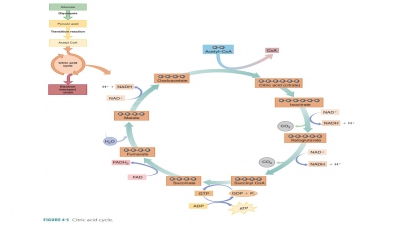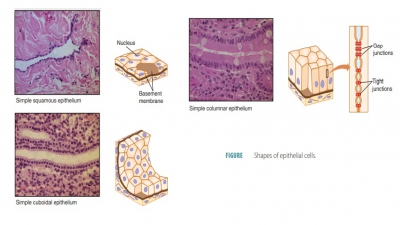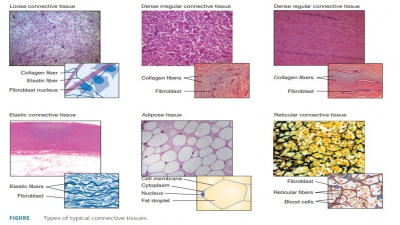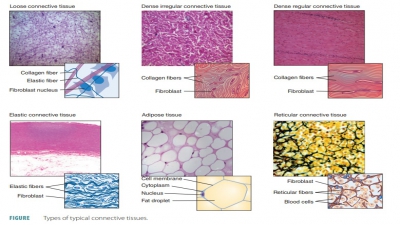Metabolism of Lipids
| Home | | Anatomy and Physiology | | Anatomy and Physiology Health Education (APHE) |Chapter: Anatomy and Physiology for Health Professionals: Levels of Organization : Cellular Metabolism
1. What is glycogenolysis? 2. Explain gluconeogenesis. 3. Describe beta oxidation. 4. What is ketogenesis?
Metabolism of
Lipids
Fats have very low amounts of
water and are the body’s most concentrated energy source. Fats yield
approxi-mately 9 kilocalories (kcal) of energy per gram during catabolism. This
is approximately twice the yield of proteins and carbohydrates (which is
approximately 4 kcal of energy per gram each). When fat is digested, most of it
is transported in lymph as fatty-protein droplets (chylomicrons). The lipids in these chylomi-crons are eventually
hydrolyzed by enzymes from the capillary endothelium. The glycerol and fatty
acids that result are absorbed by body cells for various types of processing.
Oxidation of Glycerol and Fatty Acids
Although there are many lipids,
triglycerides are the only type regularly oxidized for energy. This requires
separate catabolism of glycerol and fatty acid chains. Glycerol is easily
converted by most body cells to glyceraldehyde- 3-phosphate. This acts as an
interme-diate substance during glycolysis. It soon enters the Krebs cycle. The
ATP energy that is gained from the complete oxidation of glyceraldehyde is
about half of the energy gained from glucose (15 ATP/glycerol). Glyceraldehyde
is, therefore, equal to half of one glucose molecule.
The initial phase of fatty acid oxidation
is called beta oxidation, which
occurs in the mitochondria. Fatty
acid chains are broken into two-carbon frag-ments of acetic acid. Also, the FAD and NAD+ coen-zymes are
reduced. The acetic acid molecules are fused to CoA. This forms acetyl CoA. During
beta oxidation, carbon in the third (beta) position is oxi-dized. The fatty
acid is cleaved between alpha and beta carbons. The acetyl CoA is picked up by
oxaloacetic acid. This enters the aerobic pathways for oxidization to carbon
dioxide and water. This is different from the oxidation of glycerol, which
instead enters the glyco-lytic pathway. Acetyl CoA cannot be used for
glucone-ogenesis because the metabolic pathway is irreversible past pyruvic
acid.
Lipogenesis
Lipogenesis is also known as triglyceride synthesis. It occurs when ATP
and glucose levels are high in the cells. Triglycerides in adipose tissue are
continuously being cycled. New fats are stored for later use and stored fats
are broken down to be released into the blood. Fat pockets on the body are
always different, not containing the same fat molecules continuously.
Glycerol and fatty acids that
come from the diet and are not needed quickly for energy are stored as
triglycerides. About half of these are found in the subcutaneous tissue, with
the remainder located in other body fat deposits. Although acetyl CoA and
glyceraldehyde 3-PO4 would normally enter the Krebs cycle, excessive
ATP leads them to accumu-late. However, when these two metabolites become
excessive, they are moved into the pathways of tri-glyceride synthesis.
Fatty acid chains are formed by
condensed ace-tyl CoA molecules. These chains lengthen at a rate of two carbons
at a time, and nearly all fatty acids in the body have an even number of carbon
atoms. Glucose is easily converted to fat because of acetyl CoA, which is an
intermediate of glucose catabolism. This is because acetyl CoA is where fatty
acid syn-thesis begins. Glyceraldehyde 3-PO4 is converted to
glycerol. This forms triglycerides when it condenses with fatty acids.
Carbohydrates from the diet can always provide the basic materials needed to
make triglycerides even when the diet is low in fat. High blood sugar causes
lipogenesis to become the pri-mary activity in the adipose tissues. Lipogenesis
is also an important function of the liver.
Lipolysis
Lipolysis is basically the opposite of lipogenesis. It is defined as the
breakdown of stored fats into fatty acids and glycerol. These substances are
then released to the blood, giving continuous supplies of fat fuels to the
organs that are needed for aerobic respiration. Fatty acids are the preferred
energy fuel for cardiac muscle, the liver, and the skeletal muscles when they
are at rest. When carbohydrate intake is insufficient, lipoly-sis increases to
fuel the body with fats. The availability of oxaloacetic acid to become a
pickup molecule influ-ences the ability of acetyl CoA to enter the Krebs cycle.
Oxaloacetic acid is converted to glucose to provide energy for the brain when
carbohydrates are lacking. Without this acid, acetyl CoA accumulates because
fat oxidation is incomplete.
The liver converts acetyl CoA
molecules to ketones (ketone bodies) during the process known as ketogenesis. Ketones are defined as organic com-pounds containing the
carbonyl group CdbondO, whose carbon
atom is joined to two other carbon atoms, with the carbonyl group occurring
within the carbon chain. The produced ketones are then released into the blood.
Examples of ketones include acetone, acetoacetic acid, and β-hydroxybutyric acid. These are not the same as the keto acids that cycle through the Krebs cycle or the ketone
bodies that are produced during fat metabolism.
1. What is
glycogenolysis?
2. Explain
gluconeogenesis.
3. Describe
beta oxidation.
4. What is
ketogenesis?




